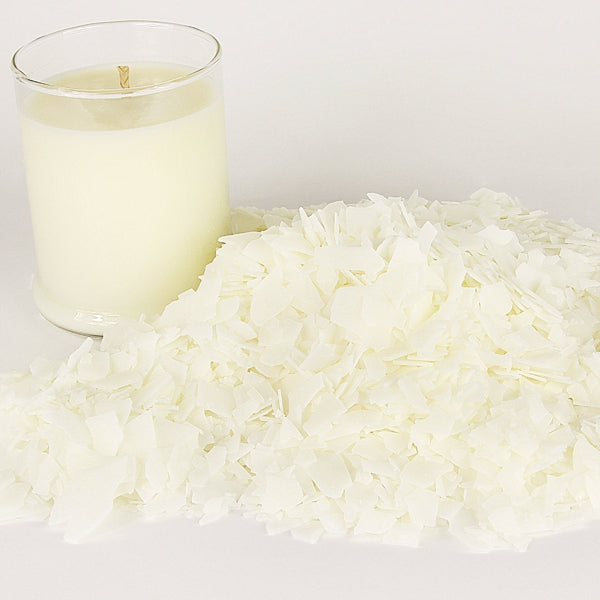Raise Your Space with Premium Soy Wax Candles and Home Fragrance
Raise Your Space with Premium Soy Wax Candles and Home Fragrance
Blog Article
From Wick to Wax: Understanding the Chemistry Behind Soy Wax Candles and Their Environmental Effect
As we illuminate our spaces with the cozy radiance of candle lights, there exists a world of elaborate chemistry behind the apparently basic act of lighting a soy wax candle. The selection between soy and paraffin wax prolongs beyond plain appearances, diving right into the realm of environmental influence and the very structure of the products. Understanding the molecular structure of soy wax and its combustion procedure clarifies the exhausts launched into our surroundings. Join us as we decipher the scientific ins and outs behind soy wax candles and explore their effects on our environment.
Soy Wax Vs. Paraffin Wax
When contrasting soy wax and paraffin wax for candle production, it is vital to comprehend the distinct features and benefits of each material. Soy wax is an all-natural, renewable energy acquired from soybean oil, making it naturally degradable and green - soy wax candles. On the other hand, paraffin wax is a by-product of oil refining, which increases concerns about its ecological effect and sustainability
Soy wax candle lights burn cleaner and send out less soot contrasted to paraffin wax candle lights, making them a much healthier choice for interior air high quality. Additionally, soy wax has a lower melting point, permitting a longer-lasting candle light that distributes fragrance extra effectively. Paraffin wax, on the various other hand, has a tendency to melt faster and much less easily, potentially launching hazardous chemicals right into the air.
From a sustainability viewpoint, soy wax is preferred for its biodegradability and renewable sourcing, straightening with the growing customer preference for environmentally conscious products. While paraffin wax has actually been a conventional option in candle light making as a result of its price and simplicity of usage, the shift towards green alternatives like soy wax is getting momentum in the market.
Chemical Composition of Soy Wax

Combustion Refine in Soy Candles
The chemical make-up of soy wax directly influences the combustion procedure in soy candles, influencing aspects such as burn time, aroma launch, and environmental effect. When a soy candle is lit, the warmth from the fire melts the wax near the wick.
The combustion performance of soy candles is influenced by the pureness of the soy wax and the high quality of the wick. A clean-burning soy candle with an appropriately sized wick will certainly lessen and create a consistent fire soot formation. This not only expands the melt time of the candle light yet likewise boosts the release of fragrances. Furthermore, soy wax candle lights have a lower environmental influence contrasted to paraffin candles as a result of their eco-friendly and renewable nature.

Ecological Benefits of Soy Wax

Considered a lasting choice to typical paraffin wax, soy wax uses remarkable environmental advantages that make it a preferred option amongst eco-conscious consumers. One substantial advantage of soy wax is its sustainable sourcing. Soy wax is originated from soybean oil, which is primarily grown in the USA. The farming of soybeans helps support regional farmers and decreases the dependency on non-renewable nonrenewable fuel sources utilized in paraffin wax production. In addition, soy wax is naturally degradable, meaning it breaks down normally without releasing damaging contaminants into the setting. This particular makes soy wax candles an extra eco-friendly option contrasted to paraffin wax candles, which are made from petroleum, a non-renewable resource. In addition, soy wax burns cleaner and creates less soot than paraffin wax, adding to much better indoor air quality and lowering the need for cleaning and upkeep. Overall, the environmental advantages of soy wax align with the expanding need for environment-friendly and sustainable items in the market.
Recycling and Disposal Considerations
Recycling and appropriate disposal of soy view it now wax candle lights play a crucial duty in maintaining environmental sustainability and lowering waste in areas and homes. The very first step is to make sure that the candle light has shed completely when it comes to recycling soy wax candles. This can be attained by allowing the candle to burn up until the wick is no more functional, and then allowing the remaining wax cool and strengthen. Once the wax has solidified, it can be carefully gotten rid of from the container.

In terms of disposal, if recycling is not a choice, soy wax candles are eco-friendly and can be safely taken care of in most household waste systems. It is always recommended to inspect with regional recycling facilities or waste management services for certain standards on candle light disposal to guarantee correct handling and environmental security.
Conclusion
Finally, the chemistry behind soy wax candle lights exposes their ecological advantages over paraffin wax candles. Soy wax, stemmed from soybean oil, burns cleaner and generates much less residue when contrasted to paraffin wax. The combustion procedure in soy candle lights is a lot more reliable, resulting in a longer and extra also shed. In addition, soy wax is renewable and eco-friendly, making it a more sustainable option for candle production. Reusing and correct disposal of soy wax candle lights additionally add to their environmental effect.
When contrasting soy wax and paraffin wax for candle production, it is important to recognize the distinctive features and benefits of each material (home fragrance).Soy wax candles burn cleaner and emit much less soot contrasted to paraffin wax candles, making them a healthier option for indoor air high quality.Taken into consideration you could try these out a lasting alternative to typical paraffin wax, soy wax offers notable environmental advantages that make it a preferred choice amongst eco-conscious consumers. Soy wax burns cleaner and produces less residue than paraffin wax, contributing to much better interior air top quality and decreasing the need for cleaning and maintenance.In verdict, the chemistry behind soy wax candle lights exposes their ecological advantages over paraffin wax candle lights
Report this page